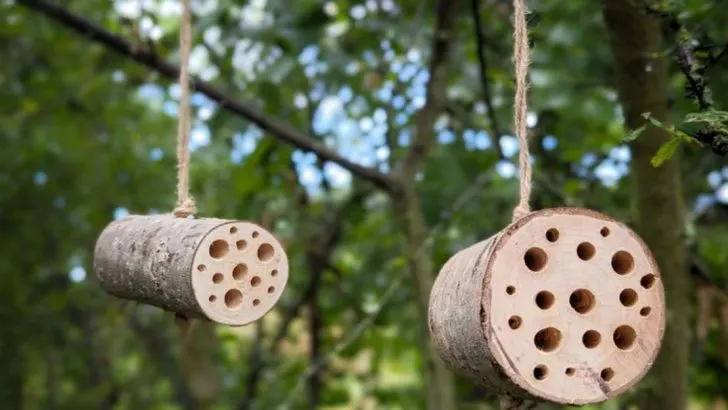Not all bee hotels are five-star. Some are more like bug traps with terrible Yelp reviews. If you’ve ever installed a cute wooden bee house and felt like a pollinator hero—only to realize no one’s checked in—you’re not alone. Most store-bought “bee hotels” are more decoration than habitat. The truth? Native bees are picky. They want clean rooms, the right architecture, and zero squatters. (Spiders and mold need not apply.) But when you get it right? You’ll witness the magic. Chubby mason bees zipping in and out like tiny construction workers. New life buzzing from every crevice. Ready to turn your backyard into actual bee real estate, not a ghost town with holes? These 12 tips will help you build the kind of bee hotel that’s fully booked all summer.
Choose the Right Location
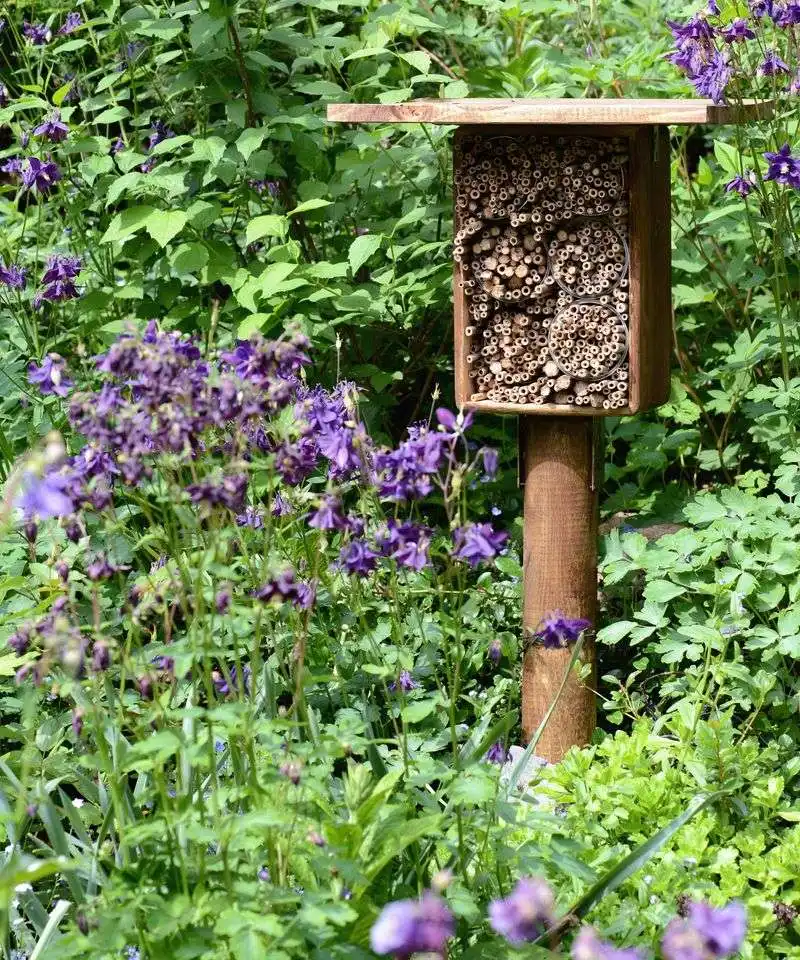
Nestled among blooming flowers, a bee hotel thrives best in a sunny, sheltered location. Bees adore warmth and protection, so placing your hotel against a south-facing wall ensures both.
Avoid areas with frequent disturbances or high foot traffic to keep the bees safe and undisturbed.
Consider the surrounding plant life, as a rich floral environment provides essential foraging opportunities. A peaceful, sun-kissed corner of your garden might just become a buzzing paradise.
Opt for Natural Materials

Crafting a bee hotel with natural materials such as bamboo, reeds, and untreated wood invites bees to settle in comfortably. Bamboo’s hollow cavities perfectly suit nesting needs.
Logs drilled with various hole sizes provide diversity, catering to different bee species.
By avoiding plastics and treated woods, you create a more appealing and safer environment, reducing chemicals that could harm bees. The natural aesthetic also blends beautifully with garden settings.
Ensure Proper Ventilation
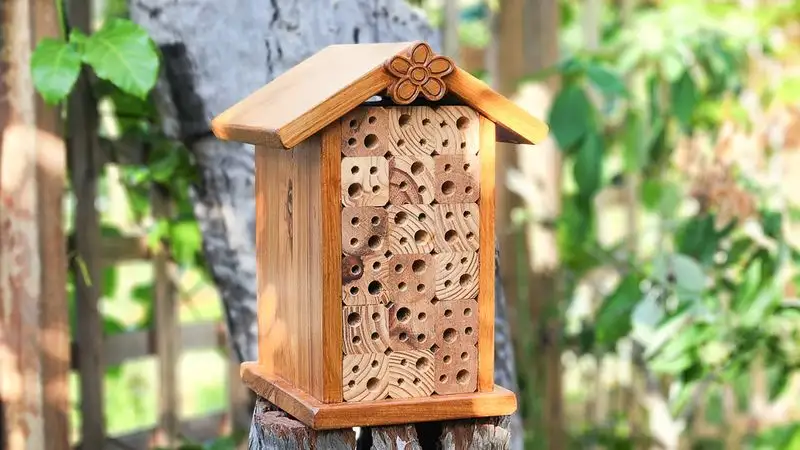
A well-ventilated bee hotel keeps guests healthy and happy. Ensure your design includes adequate ventilation holes to prevent moisture buildup.
Proper airflow deters mold and fungus, which could harm bee larvae.
Positioning the hotel in a breezy area can enhance ventilation naturally. By facilitating fresh air exchange, you create a more inviting and safe haven for your buzzing inhabitants.
Provide Various Hole Sizes
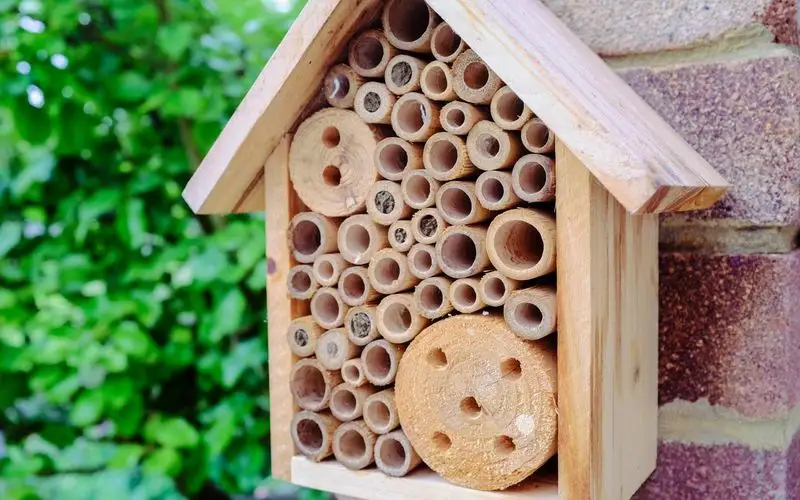
Catering to diverse bee species means incorporating various hole sizes in your bee hotel. Small bees appreciate tiny openings, while larger bees require slightly bigger ones.
This diversity ensures a welcoming environment for numerous species.
Each hole should be smooth and splinter-free to avoid harming the bees. By offering a range of nesting options, you create a bustling microhabitat that supports the ecosystem.
Maintain Cleanliness Regularly
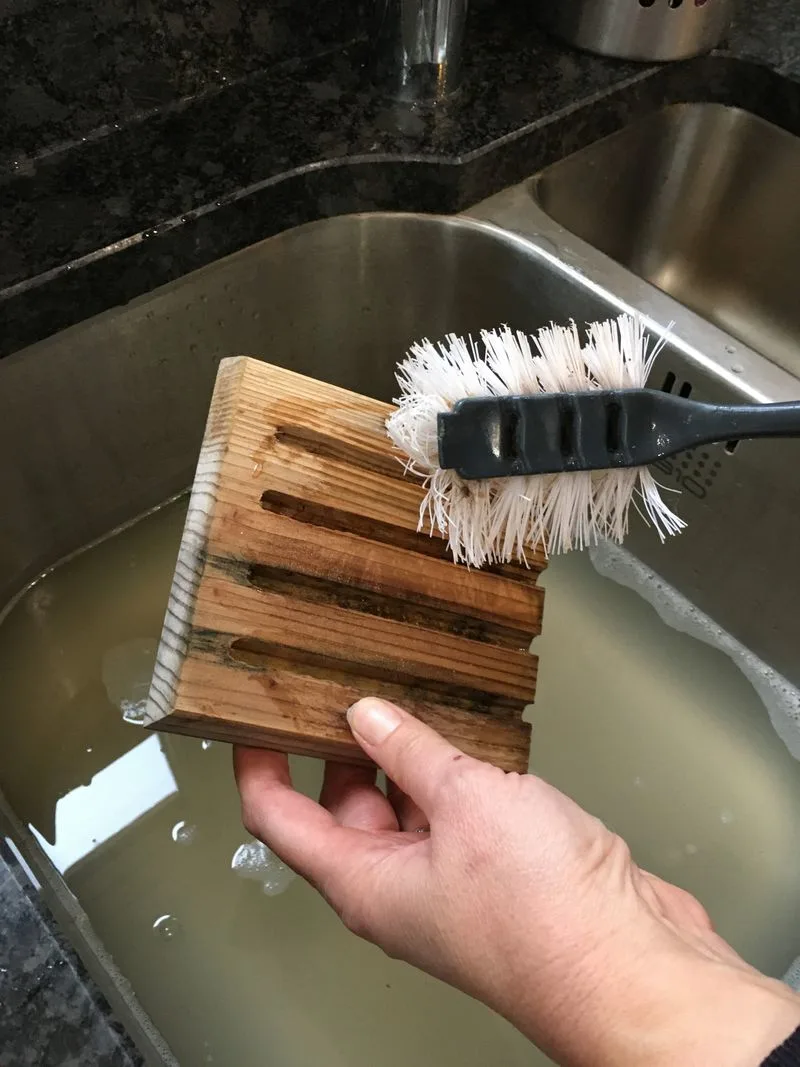
Regular maintenance extends the lifespan of your bee hotel and boosts its appeal. Cleanliness ensures that bees have a sanitary space to inhabit.
Remove debris and inspect for signs of mold or damage.
Replace worn-out materials to maintain a fresh, inviting atmosphere. A well-kept hotel not only attracts more bees but also supports their health and productivity.
Avoid Using Paints or Varnishes
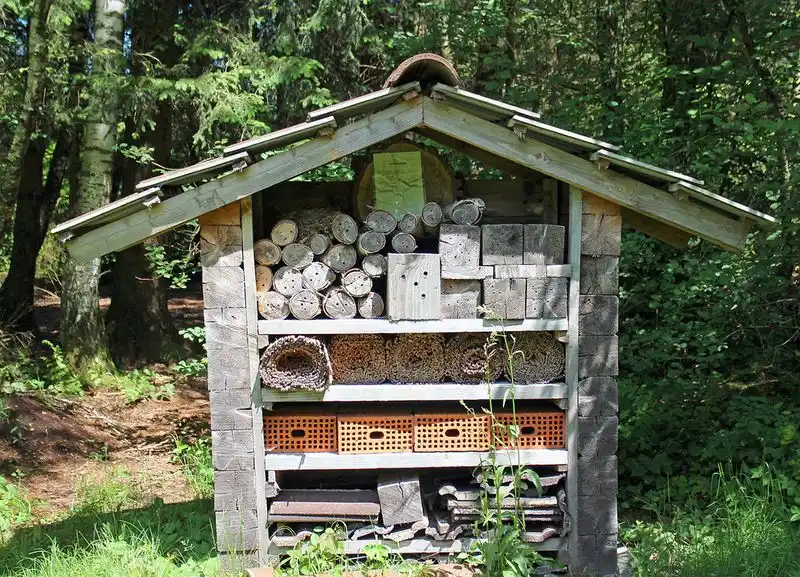
Let the natural beauty of wood stand out by avoiding paints and varnishes on your bee hotel. These substances may contain harmful chemicals that deter bees.
Natural wood ages gracefully, offering bees a more authentic habitat.
The rustic charm of untreated surfaces harmonizes with nature, creating a serene environment. Prioritizing natural aesthetics enhances the ecological value of your bee hotel.
Position at the Right Height
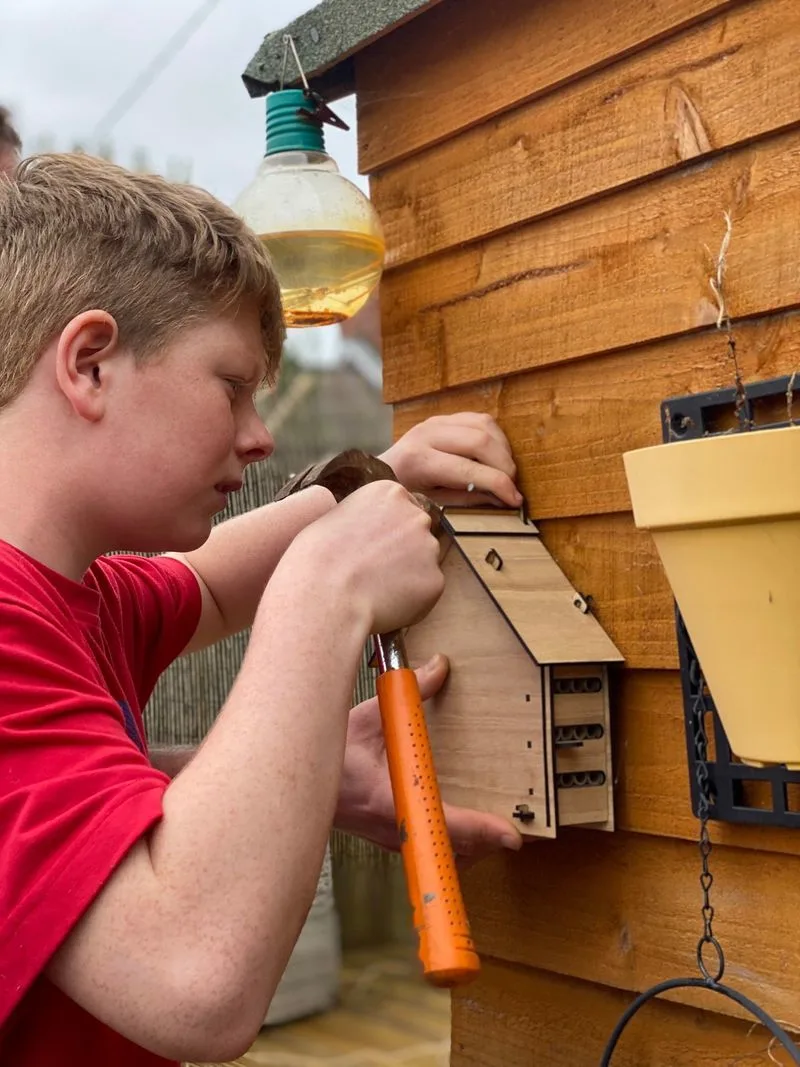
Placing your bee hotel at an ideal height ensures accessibility for its tiny guests. Mount it at about waist height, approximately three to five feet off the ground.
This elevation protects bees from ground predators while keeping them within easy reach for observation.
The convenience of this height benefits both bees and curious humans, fostering a close connection with nature.
Orient the Hotel Properly
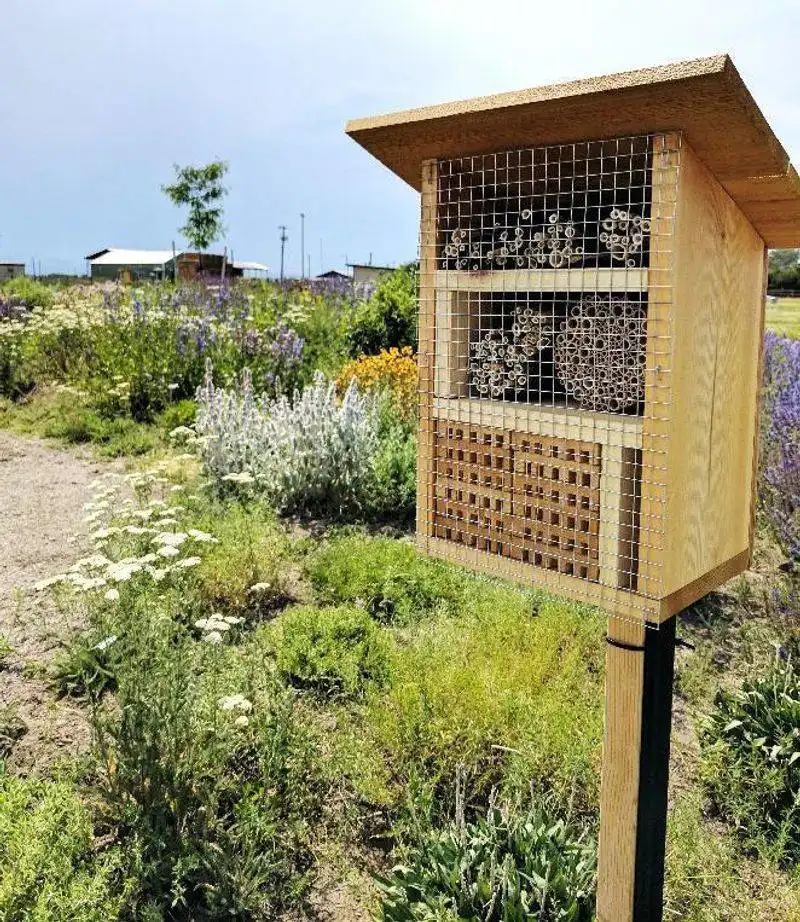
Orientation matters—a south-facing bee hotel basks in sunlight, providing essential warmth for bees. Aligning it correctly ensures maximum energy absorption.
This positioning aids in temperature regulation inside the hotel.
By optimizing orientation, you enhance the comfort and attractiveness of your bee sanctuary, encouraging more residents to settle in.
Use Solid Backing
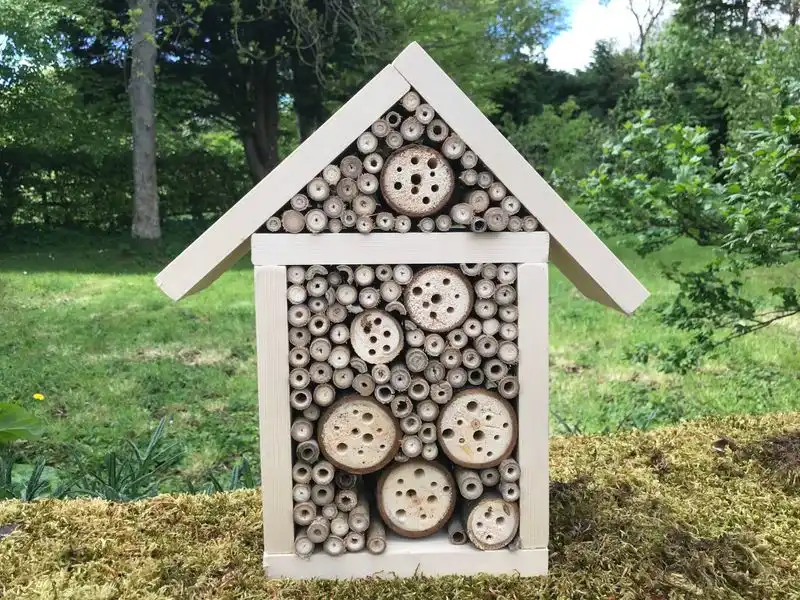
A solid backing in a bee hotel adds security and insulation. This feature prevents wind from passing through and protects against harsh weather.
Bees feel more secure with a stable backdrop.
By incorporating a robust backing, you not only enhance the structural integrity of the hotel but also support the wellbeing of its residents.
Include a Roof for Protection
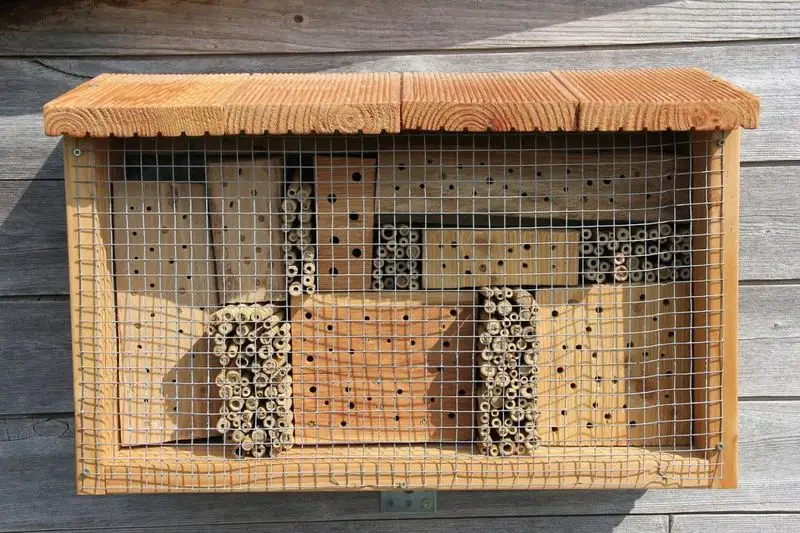
A protective roof shields your bee hotel from rain and intense sunlight, prolonging its life and comfort. An overhanging roof keeps water out and provides shade.
This simple addition ensures a cozy, dry refuge for bees, even during inclement weather.
By incorporating effective roofing, you safeguard the hotel’s inhabitants and enhance its durability.
Inspect for Pests Regularly
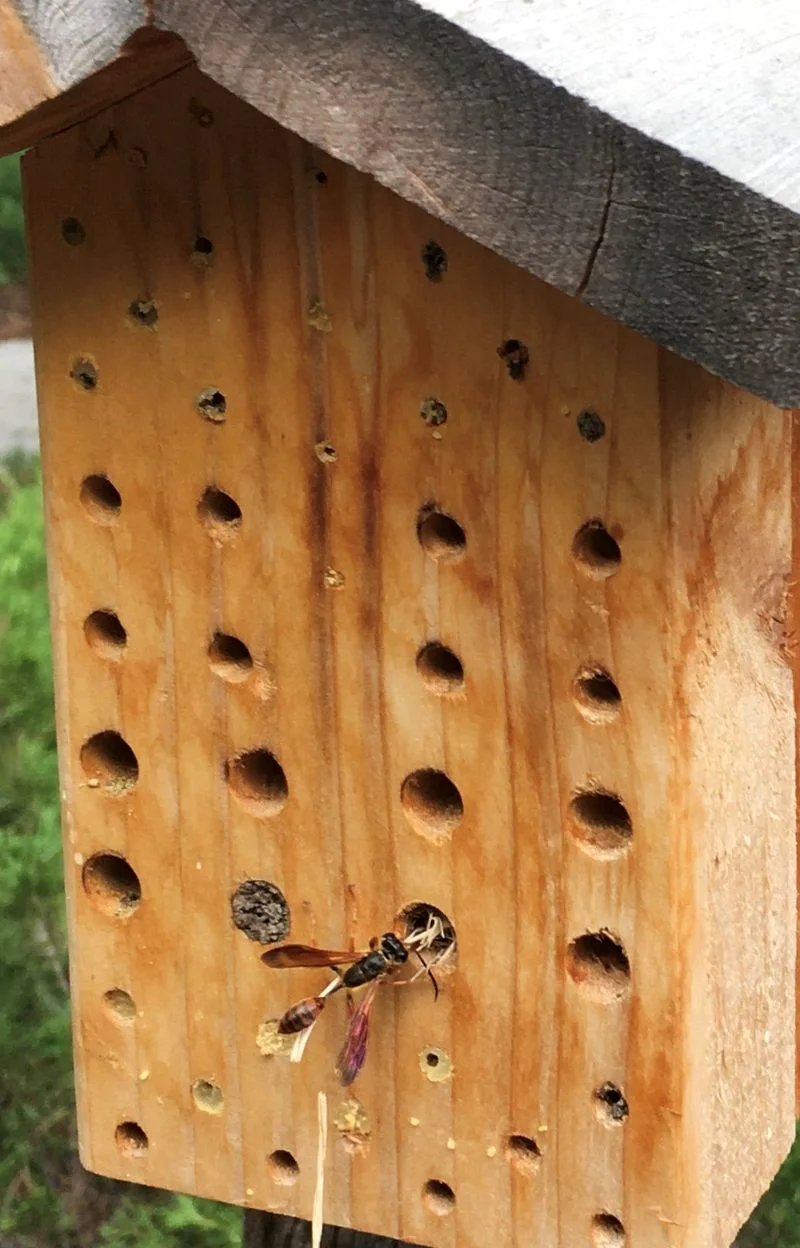
Vigilance against pests keeps your bee hotel a haven rather than a hazard. Regular inspections help manage mites, spiders, and other threats.
Maintaining a pest-free environment supports bee health and productivity.
Prompt action upon spotting intruders safeguards the hotel’s tranquility, ensuring it remains a safe, thriving habitat.
Encourage Nearby Foraging
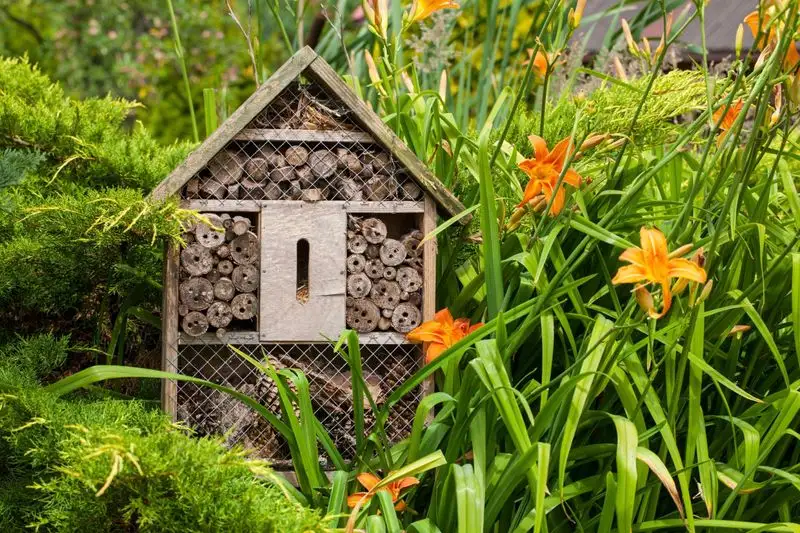
A successful bee hotel features abundant nearby foraging opportunities. Planting diverse flowers attracts bees with ample nectar and pollen.
Native flora is particularly beneficial, aligning with bee dietary needs.
A well-planned garden not only beautifies your space but also supports the thriving bee population, turning your yard into a buzzing ecosystem.

